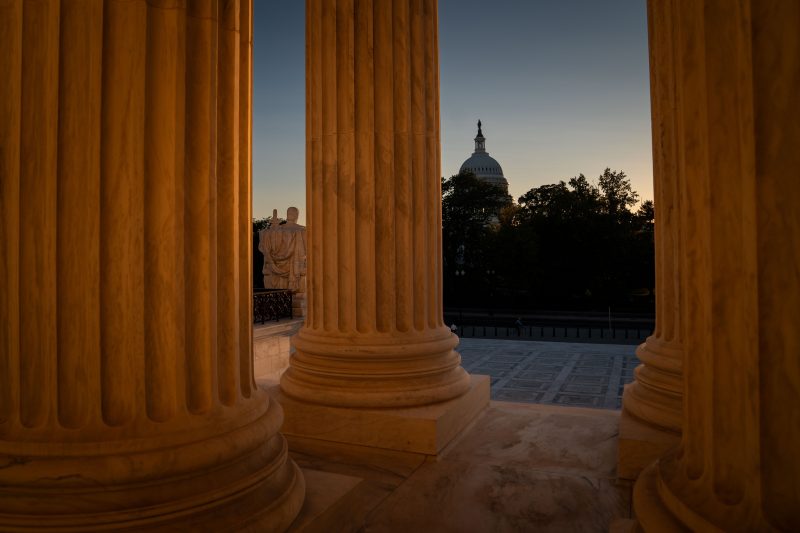American exceptionalism is real.
One example is the government’s continuing inability to approve budgets on time. That’s the fuel of government shutdowns that don’t happen elsewhere like they happen here.
It’s worth noting that all shutdowns are partial. Some government services always continue. Yet the disruption from even a threatened shutdown, like we are experiencing now, is serious — a lesson America can’t seem to learn no matter how many chances it’s had.
With another shutdown looming for Sunday, there have been five since fiscal 1977, according to the Congressional Research Service (CRS). It seems like more because shutdown threats come much more frequently and make headlines for months. There were two partial closures in fiscal 1996 of 5 days and 21 days, a 16-day stoppage in 2014, and a barely noticed, two-day 2018 weekend event. The longest was the most recent — 34 days from Dec. 21, 2018, through Jan. 25, 2019 — making those holidays much less happy.
Also, since 1977, there have been 20 funding gaps or lapses. (In October 1984, one gap that ended and another gap that began on the same day are counted as two by CRS, because of the timing of temporary funding measures.) Gaps and lapses are periods when Congress fails to approve money for a government activity. Not all gaps result in shutdowns. If the lapse is short, agencies might not have time to complete shutdown activities before money flows again. Agencies also can postpone shutting down if funding appears imminent.
How a government shutdown could affect you
End of carousel
Despite being repeatedly subjected to threatened and real shutdowns, this disruption doesn’t get any easier. Even a shutdown possibility can be disorienting, as agencies must prepare to close, taking time away from their missions. Citizens must plan to get along without services for who knows how long. Federal contractors must do business in a confused climate. Feds on the furlough list must figure out how to survive without pay, until retroactive checks are issued at the end of a shutdown.
Funding gaps and shutdowns should be avoided with congressional approval of 12 regular appropriations bills by Sept. 30 each year. But our elected officials fail that basic duty — funding the government on time — most of the time.
Since fiscal 1977, the 12 regular appropriations bills needed to fully fund the government have been approved on time only four times, in fiscal years 1977, 1989, 1995 and 1997, according to the research service. Its report said the 20 funding gaps ranged from one day to 34 full days
Sept. 30 is the most popular day to start a shutdown because starting with fiscal 1977 the government’s budget, or fiscal, years began on Oct. 1 of each calendar year.
Today, we’re threatened with much of the government shutting because chaotic Republicans in the House have done more arguing among themselves than governing, leaving funding legislation in serious doubt. Some of them apparently think shutting federal agencies isn’t such a bad thing, anyway.
If hard right congressional demands are not accepted and “a shutdown occurs, then so be it,” Rep. Ralph Norman (R-S.C.) told The Hill last month. “We should not fear a government shutdown,” Rep. Bob Good (R-Va.), said outside the Capitol Building in July. “Most of what we do up here is bad anyway.”
Millions of people disagree, particularly those who would miss needed federal services — including Head Start preschool programs, the Women, Infants and Children (WIC) nutrition project, new small business loans, clinical trials, and other scientific research. Other operations like postal delivery, law enforcement, and air traffic control and security would continue.
The first threatened shutdown was in 1879, according to a National Park Service article. “Fearing ‘negro domination,’” after the Civil War, the Park Service said White southern Democrats thwarted approval of the government’s $45 million budget because they did not want money for federal marshals and the Army to protect Black voting rights. “At no time before,’ the article said, ‘had there been such a bold attempt to ‘shut down’ the operations of the federal government by a denial of funding.”
But that era was far different from now.
“The modern Congressional budget process didn’t take hold until the 1970s,” Maya MacGuineas, president of the nongovernmental, bipartisan Committee for a Responsible Federal Budget, explained, ‘so today’s funding battles are not at all comparable to eras before then.”
Furthermore, MacGuineas said legal opinions issued by Carter administration Attorney General Benjamin Civiletti in 1980 and 1981 argued “the Antideficiency Act requires agencies to stop working during funding gaps, thus the creation of the modern shutdown.”
Other nations don’t threaten their citizens this way.
America’s bicameral legislature and the separation of powers have their strong points, but they also provide structural reasons the United States suffers more of these disruptions than other countries. Parliamentary democracies with one chamber, or at least one dominant chamber, don’t have bicameral fights that interfere with government work. Nor do they separate the legislative and executive functions as America does, eliminating another point of contention.
“Shutdowns have always occurred when one party controlled the executive branch and the other controlled one chamber of the legislature,” MacGuineas said, “so there is always a higher risk of shutdown during divided government.”
This system can work if people on Capitol Hill make it happen.
“The big issue these days is that we are so polarized, lawmakers refuse to compromise, almost out of principle, which undermines our ability to govern in many ways,” MacGuineas said. “Fights over the debt ceiling and government funding are two of the best and stupidest examples of this.”
Voters can make a difference too, but “the American public doesn’t hold its leadership accountable for the way it they manage our government,” said Max Stier, president and CEO of the Partnership for Public Service.
One reason is the impact of shutdowns is not evenly felt. Because all government shutdowns are partial, they hit some segments of the population — low-income families depending on the federal nutrition plan, for example — harder than others.
Another reason shutdowns continue in America, Stier added, is debates over funding lapses often are “portrayed as a competition between … political parties, rather than having a real appreciation for fundamentally what’s at stake.”
Now, we have the added problem of competition within the Republican Party aggravating the shutdown threat.


































